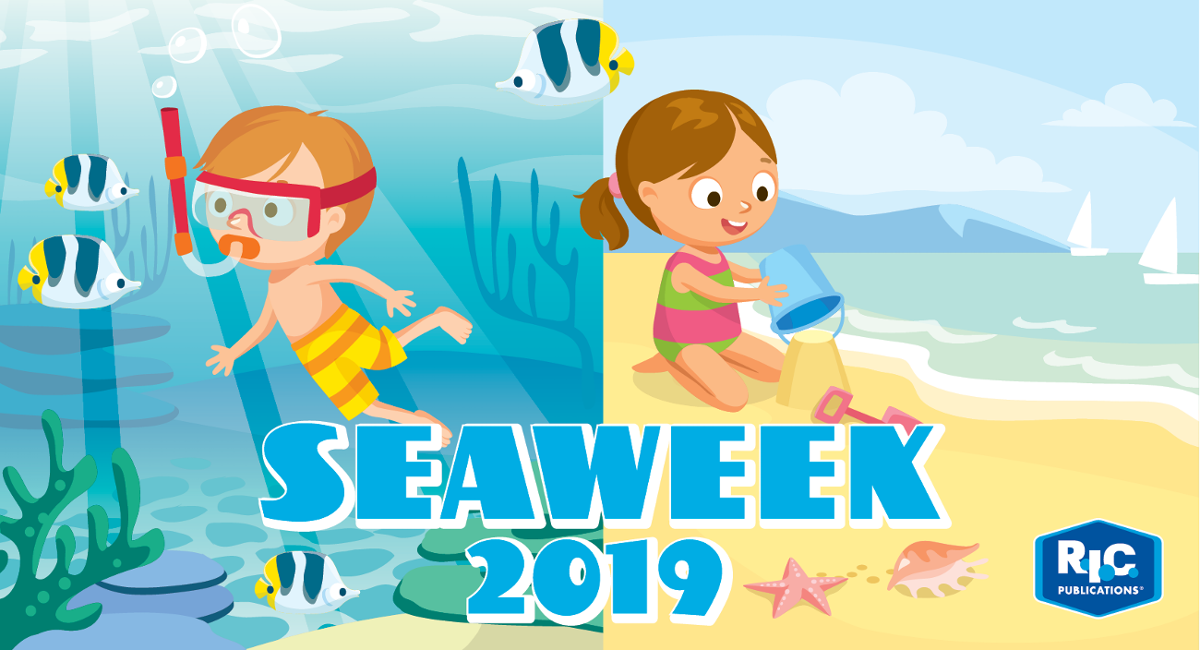- Thursday 28 February 2019
- 0 Comments
Seaweek is a great time to teach students about our amazing sea life, and the importance of conserving it.
Seaweek provides an excellent theme for lessons that cover many areas of the New Zealand Curriculum, while learning about the planet’s oceanic ecosystems and instilling in students a sense of the importance of protecting and conserving the environment. Of particular importance at the moment is the Great Barrier Reef, one of the seven wonders of the natural world, which is experiencing a catastrophic ecosystem collapse with species numbers rapidly decreasing.
Here are some ideas that cover selected curriculum areas.
Social Sciences:
- Discuss marine pollution and its consequences; for example, oil spills, plastics. Find newspaper clippings detailing these pollutions.
- Discuss consequences of overfishing or dolphins being tangled in fishing nets.
Mathematics:
- Tally sea creatures and graph the results.
- Find an underwater scene to create a jigsaw puzzle from.
- Make number stories to match fishy pictures.
Science:
- Redesign a human body so it can live under the sea.
- Find out the differences between turtles and tortoises, seals and sea lions, and dolphins and porpoises.
- Look at life cycles of various animals that live in the sea.
- Learn about the sea food chain. Make up a daily menu for a particular sea creature.
English:
- Find small words within larger words.
- Study ‘sea’ myths and legends; for example, mermaids, Loch Ness.
- Describe the sea to an alien in 20 words or less.
- Write fact sheets about unusual sea creatures.
- Write diary entries; for example, A day in the life of a ..., Living underwater ...
- Make up tongue twisters relevant to the sea.
The Arts:
- Use recycled materials to make a seascape.
- Listen to ocean noises and draw a picture of what the sounds conjure up in students' minds.
- Origami boat making.
- Make shell fossils out of plaster of Paris.
- Learn songs about the sea.
- Design a strange sea creature.
Health and Physical Education:
- Discuss water, beach or sun safety rules.
- Crab relay race—children scuttle along like a crab.
- Reflections—copy your partner’s movements.
To finish, why not share some interesting facts to get your students enthusiastic about being protectors of the future!
- Clownfish (like our favourite fishy father, Marlin, from Pixar's Finding Nemo) live in a symbiotic relationship with sea anemones. Clownfish have a protective mucous covering which allows them to swim alongst the anemones' stinging tentacles. This provides protection for the clownfish from predators and the clownfish assists the anemone by providing it with food.
- Antarctic fish have anti-freeze in their blood to prevent their blood from feezing.
- Corals are animals and not plants. Each polyp of a colony is joined to its neighbour via connective tissue. Corals have algae that lives within their tissues known as zooxanthellae and these assist the corals by providing nutrients to them via photosynthesis.
